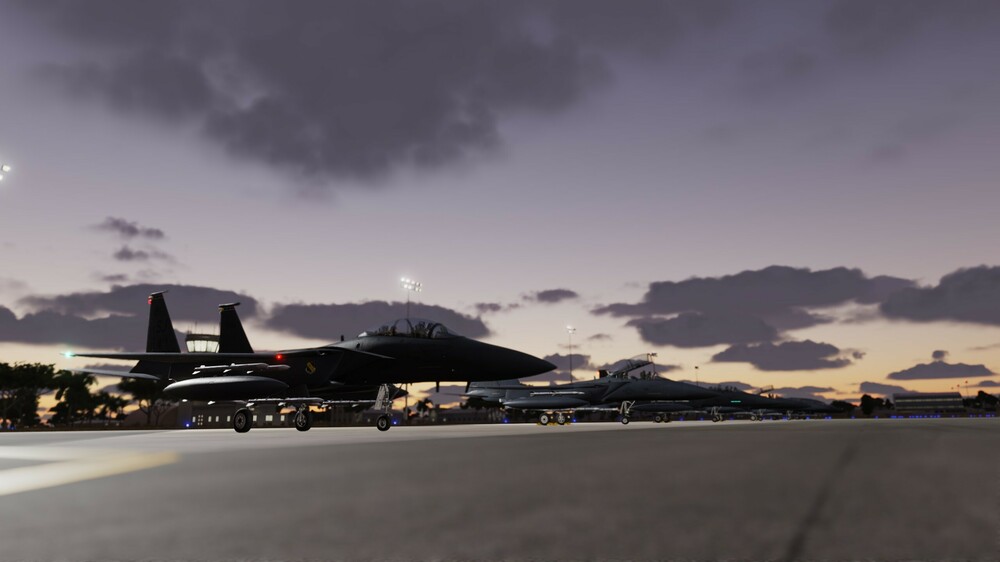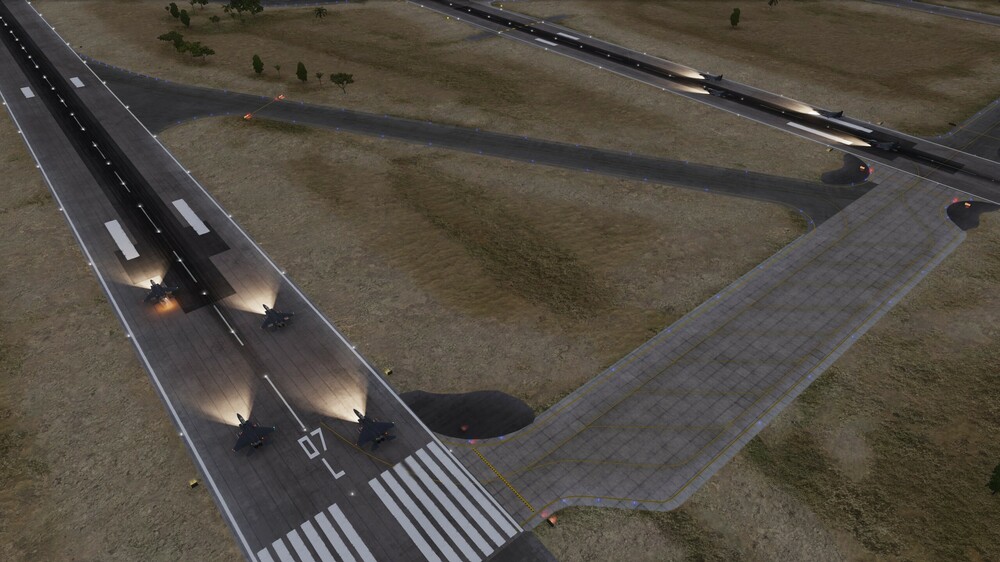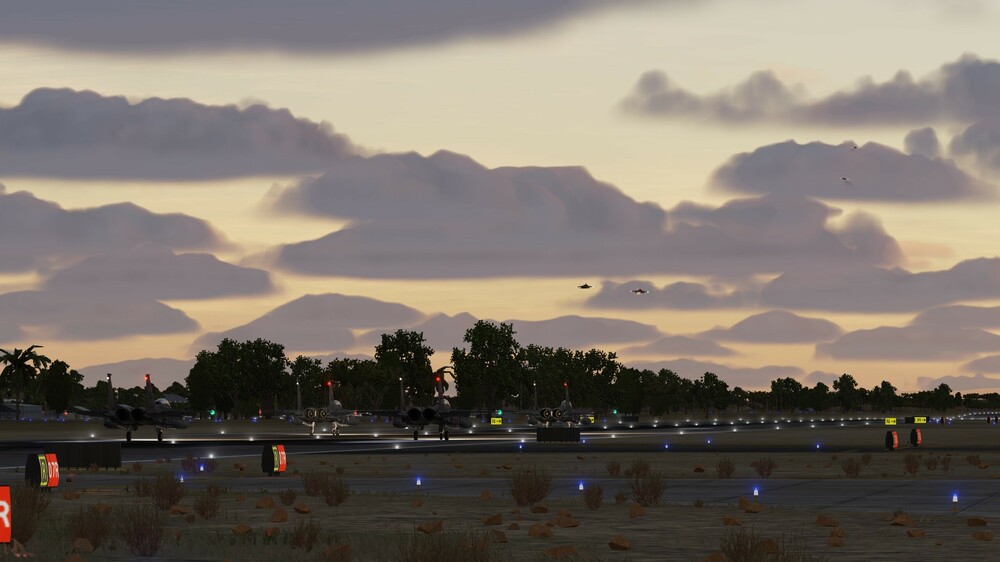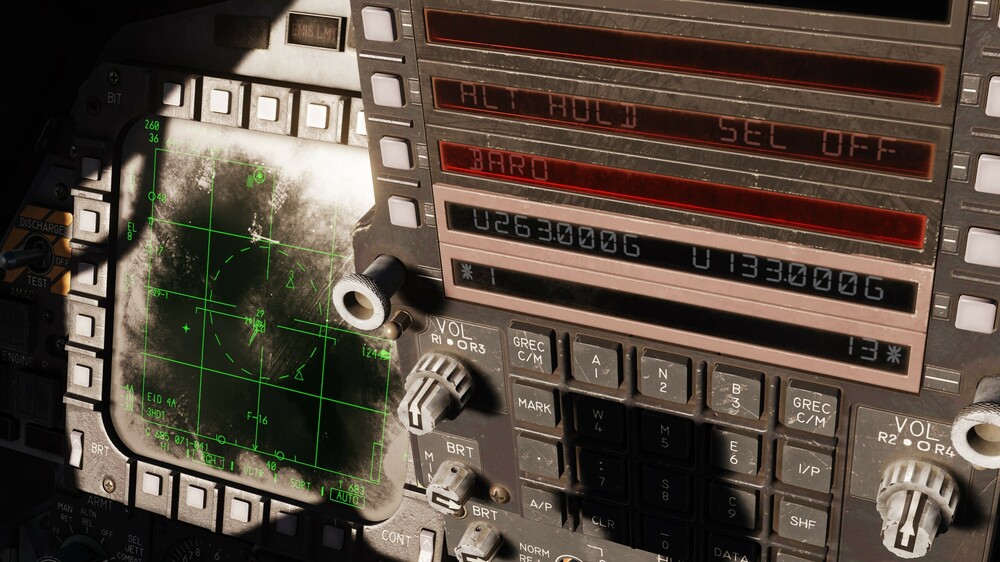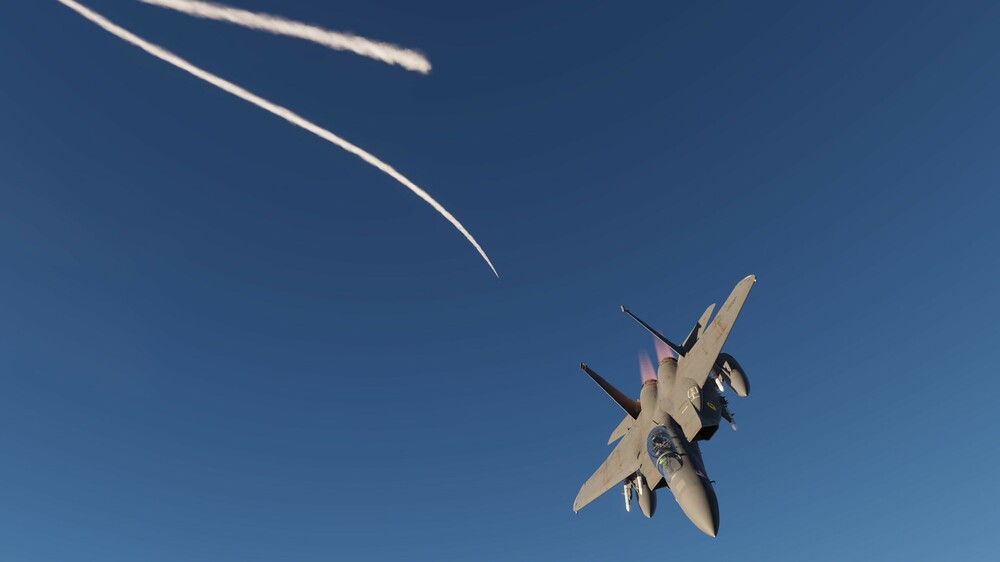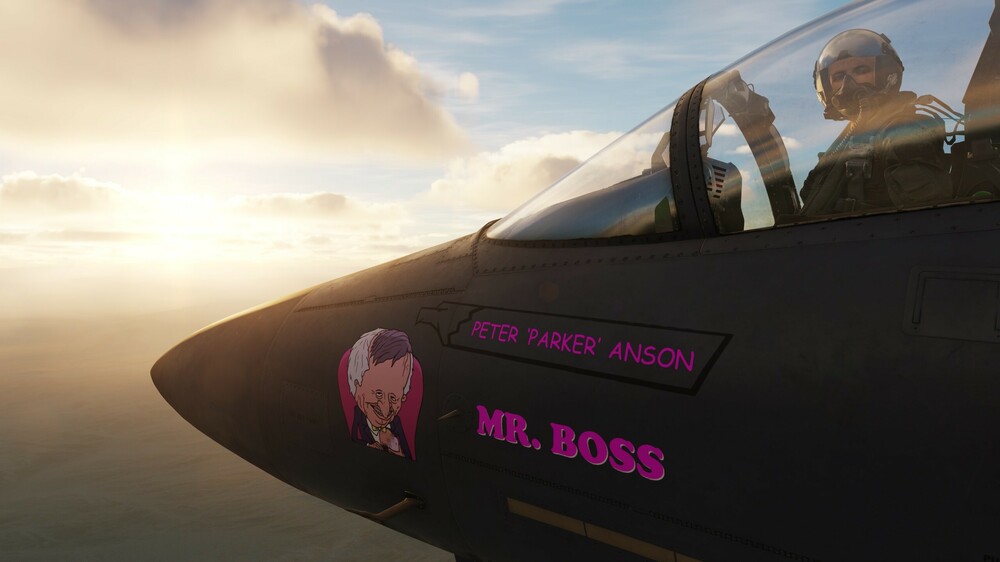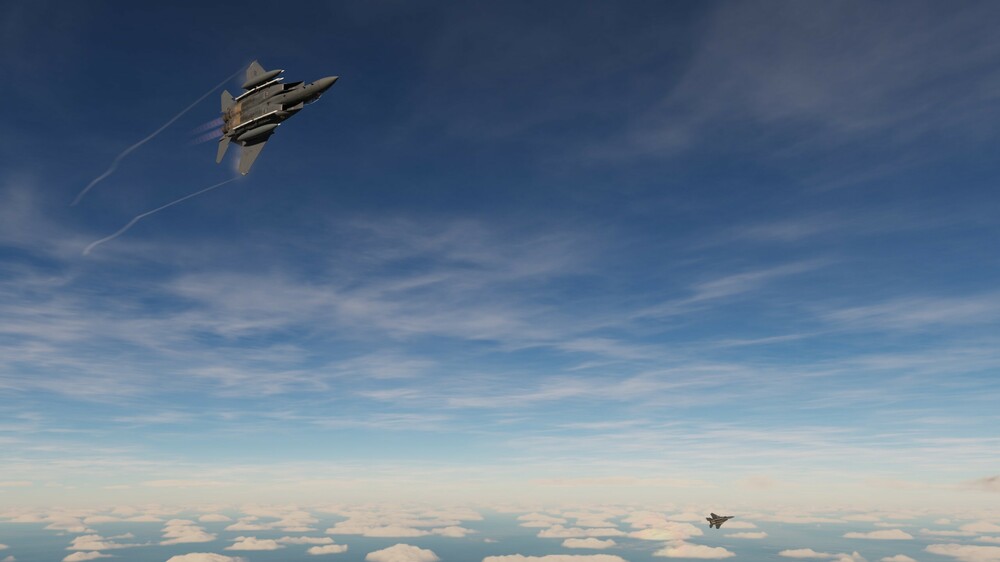-
Posts
333 -
Joined
-
Last visited
Content Type
Profiles
Forums
Events
Everything posted by Panny
-
Hi there, This morning I booted up my Crystal headset, to find I got error 20700. I had used the headset the day before and had made no changes, so was rather confused to get it. Looking around I attempted the following: Reseated cables Bypassed the USB hub to go straight into motherboard Uninstalled Pimax Play including data in program data and appdata Reinstalled Shut down and unplugged desktop, then cold started desktop Disabled iGPU Updated Nvidia drivers All no luck I do not have AMD Adrenaline installed, nor did I ever. So I'm somewhat baffled what changed somewhere for this issue to arise. I've raised a ticket on Discord but I'm concerned some other random thing happened I couldn't have anticipated. Cheers, Peter
-
It's alarming to me that they pushed the headset without eye tracking precisely because of the additional GPU workload without DFR. Why would you market an affordable headset that still needs a £1k+ graphics card? I would have never got the Crystal if it didn't have eyetracking.
-
That is utter speculation and there is no substance to that statement. I'd look forward to your evidence that HB would do such a thing beyond your interpretation. I actually think the release of the F-4 will make the F1 even more popular. Currently there isn't a directly comparable 3rd gen aircraft to the F1 in DCS, with the CE being a mid70s vintage. The F-4E that we get is early 70s, and aside from being a more complex two seater, have similar capabilities. I suspect people will jump in to the F-4 and become naturally interested in trying other aircraft, and most particularly the likes of the F1 and future MiG-23. Principally because the Mirage and Phantom complement each other in terms of gameplay - not compete. The presence of both serve to greatly enrich the Cold War gameplay potential DCS has.
-
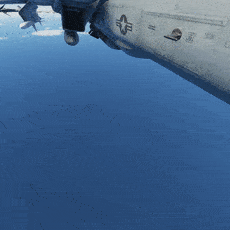
F-4E Phantom II Development Update and Release Delay Announcement
Panny replied to IronMike's topic in DCS: F-4E Phantom
I think VR users can certainly be quite thankful -
And don't forget - if you get a bad lock in CAA you have to either get the WSO to leave air to air mode from the back seat, or rotate the weapon selector knob to 'B' before you can cage and hit CAA again What could go wrong!
-
a good set up to do it: Start at 20k ft MSL at 300IAS. Snap the stick left/right. At 90° roll violently add full aft stick in addition to your roll. Hold the stick full aft left/right until the plane enters a spin.
-
the switch does both - so if you acquire a lock while having gun selected because you wanted a left scan corridor, ayou'll want to rock it back to the Sparrow, or you'll inadvertently fire the gun when you wanted to launch the Sparrow
-
If this is stating the obvious, then my apologies. So much will be dictated by how much situational awareness you can reasonably build. The choice of you going into a BVR engagement where you're employing >5nm rely on knowledge of the threat likely before radar detection. The radar can probably detect a fighter sized target up to 25nm, but you're reaching for optimal circumstances. Add ground clutter on both sides, then you having to descend to enter a look-up situation and your detection range will reduce due to the interference(and be harder in general to manage). You have contact(s) on scope, this is further complicated if you have a wingman and you have to issue a sort and hope that the scope can pick out two contacts. Say if you're eagle eyed you get a lock at 15nm, and at worst 10nm(if you didn't spot by then you're not going to really have a 'bvr' opportunity). You're then going to have to check that it is a good lock and you haven't locked something erroneous(so you may have to break lock and start again). Once you're sure you have a good lock, remember to IFF if you didn't during search, if it's an AIM-7E you're carrying you'll have to count to 4 before employing(assuming a vc of 1200 between you and threat, you've closed nearly a mile and a half in that time); 2 seconds for F/M. For the former missile you'll have to try and get within rmax(and LAR if interlock isn't out) which may not be many miles, which means you're either shooting and blowing through or going to get into a dogfight. F/M may give you a better opportunity thanks to its better range. The circumstance above assumes that you have a GCI and you know what to look for in the first place. Your RWR could probably help you very vaguely, but not much given it's older gen. I think, as evidenced by reports like Project Red Baron, so much of whether you win or not is dependent on situational awareness, and employing in a BVR context with the Phantom will probably be dependent on having some support from a controller. Following that you're next thing is probably ensuring that you/WSO is really on it with the radar, knows how to manage it to get a good search probably. Just basing off the AIM-7E in game(you can mod it onto the F-14), even when you go very high and fast to get an rmax shot I think you'd be exceptionally lucky to get a scenario in which you can skate. I suspect planning for and owning banzai will be the way to go. If the Sparrow gets the kill, then great, otherwise hopefully it gave you better angles against the bad guy I know this isn't tactics per se, but it's worth recognising the number of steps and consideration that have to go into it to get some sort of bvr opportunity
-
Hello all, I would just like to make prospective members aware that recruitment for DCAF has closed. It will reopen in mid Q2 of this year, in anticipation of our subsequent training season. If you have any questions, don't hesitate to message me. Kind regards, Peter
-
The Digital Coalition Air Force (DCAF) is pleased to announce that it is opening recruitment for its upcoming training season that begins next January and finishes at the close of March. If you are someone who wants to sharpen their skills and get the best out of what DCS has to offer, this group is for you. We are fielding applications for controllers (whether ATC, GCI, JTAC/FAC), AV-8B Harrier II, F-15E Strike Eagle, and F-16C Fighting Falcon. DCAF is a milsim group with most of its community based in the EU. We pride ourselves on our excellent training syllabus, instructors, and the ops that we offer our pilots. Presently, DCAF alternates between training and operations season every quarter, in which the former is used to train new cadets to the required squadron standard, and to sharpen the skills of our current aircrew. We undertake this rigorous training program to ensure that all our aircrew meet the standards required for our ops season, fit into the squadron, and get the best from the incredible campaign our hardworking mission makers create. Our times: During training season we fly every Wednesday, Thursday, and Sunday at 1830Z. It is a minimum requirement to regularly attend every Thursday, and dependent on some squadrons attend twice a week due to training workload and meaningful progression. Our squadrons: AV-8B Harrier II – (v)RAF 20 Squadron DCAF’s (v)RAF 20 Squadron is our longest-serving, and stands out for its unwavering determination and unparalleled reliability in mission versatility. Fuelled by a culture of continuous self-reflection and improvement, we never back down—we get the job done. Upon completing our rigorous training program, you'll master Close Air Support, Detached Air Support, and Aerial Interdiction - regardless of the time of day or weather conditions - in contested airspace, at low-level, and from austere locations. If you're ready to unlock your jet's full potential and join a culture that thrives on excellence, 20 Squadron is your ultimate destination F-15E Strike Eagle – (v)USAF 335th ‘Chiefs’ The 335th ‘Chiefs’ is DCAF’s largest and premier air to air squadron, operating the F-15E Strike Eagle. Thanks to the incredible power of the F-15E’s -229 engines, APG-70 and load carrying capacity, the Chiefs has the perseverance to stay on station longer, fly higher, and fly faster than any other type in DCAF’s roster. If you are interested in rigorous training, getting a comprehensive air to air understanding, being part of complex operations, immersive experiences, and getting the best out of what DCS has to offer, this is the squadron for you. By the end of the training season, you will be able to operate as a wingman in a flight, execute fourship tacform and BVR in any weather, at any time of day; all without datalink. You will be trained in both DCA and OCA fundamentals in order to tailor the squadron’s air to air tasking according to the mission at hand; including an appreciation of ACM execution. Air to air refuelling, day or night, will be the norm. You can read more about us and how we undertake training season here: F-16C Fighting Falcon – (v)USAF 119th ‘Jersey Devils’ The 119th 'Jersey Devil's is DCAF's dedicated Wild Weasels, specializing in hunting and killing enemy SAMs and SHORAD systems, clearing a path for the other squadrons. We are looking for pilots that accept high risk, that are flexible and able to solve problems fast and creatively as they pop up. We are usually first in and last to leave, and we rely on our own ability to defend against air and ground threats alike! If you like fast and dynamic problem solving, and love flying the "racing model" of all airframes, then you might have what it takes to be a Devil! Combined Controller Wing: We've always cared about having Air Traffic Controllers and Aerospace Battle Managers be commonplace in our operations, providing a great setting for both experienced and aspiring controllers to hone their skills. We’re looking for 4 new controllers to join our team in 2024. Training Season you can expect to be supporting aircrew alongside other controllers for a more rich learning environment, with 1:1 tutoring available as you progress through the online lessons and assessments, this will prepare you for our Operations Season in April. Note: Combined Arms is required for ATC roles and Simple Radio Standalone is used for radio communications, we provide free licences for LotAtc on our servers. --------------------------------- If you are interested in joining DCAF, you can either get in contact with a recruitment officer directly from one of the above squadrons, or you can get in contact with any of the links below. Depending on the squadron selected, applications will involve an introductory talk and checkrides in order to filter the appropriate applicants, which will be explained by your recruitment officer. It is a good idea to be familiar with the module that you are applying for (i.e. ability to air to air refuel and understand basic combat systems), as these will be assessed during the checkrides. Due to the nature of our training and operations seasons, you should be confident that at least the first 6 months of DCAF will generally be free for you will be able to attend(holidays, annual leave etc. of course are absolutely fine). Ideally, candidates who will have a predictable schedule for the next year are preferred. We look forward to hearing from you and seeing you on the training season. Kind regards, DCAF Recruitment Team https://discord.gg/dcaf https://dcafoc.wixsite.com/home
-
The 335th ‘Chiefs’ is DCAF’s largest and premier air to air squadron, operating the F-15E Strike Eagle. Thanks to the incredible power of the F-15E’s -229 engines, APG-70 and load carrying capacity, the Chiefs has the perseverance to stay on station longer, fly higher, and fly faster than any other type in DCAF’s roster. If you are interested in rigorous training, getting a comprehensive air to air understanding, being part of complex operations, immersive experiences, and getting the best out of what DCS has to offer, this is the squadron for you. By the end of the training season, you will be able to operate as a wingman in a flight, execute fourship tacform and BVR in any weather, at any time of day; all without datalink. You will be trained in both DCA and OCA fundamentals in order to tailor the squadron’s air to air tasking according to the mission at hand; including an appreciation of ACM execution. Air to air refuelling, day or night, will be the norm. The squadron boasts a fully trained roster of 12 pilots and is looking to expand its squadron further in anticipation of Operations Season 3, which will take place from next April to the end of June. We anticipate to take on a small handful of new cadets for our training season. The 335th is a very tight knit community that is passionate about what it does and its role in DCAF. We strive to constantly develop ourselves, not only from the baseline of training season, but to progress further with flight leading, instructor qualifications, and mission planning for the overarching DCAF organisation. If you are interested in being part of a highly motivated, well organised and ambitious squadron and do your part, the 335th is a prime choice. If you work hard in training, be assured that you will find your time in DCAF greatly rewarding. Applicants will join for an introductory talk as to what we do, and what is expected from one another. Subject to your introductory talk, you will be invited for some checkrides to assess your initial skill level to decide whether we want to take you on for our training season. After the introductory talk, we will give you all the necessary resources to succeed and invite you to undertake checkrides to ensure you have a good core skillbase. This will include a flying ability assessment with an assessor from startup to shutdown, basic manoeuvres, aircraft handling and air to air refuelling. In addition you will be asked to play a custom mission and submit a tacview and trackfile of your basic combat performance(we aren’t looking for procedures but more to ensure that you are comfortable with using the airframe in basic combat). Upon final review among 335th recruitment officers, if you are accepted we will provide you access to our comprehensive training syllabus, and you will begin formal training from the beginning of January 2025. Training sessions will be hosted 3 times a week at Tuesday, Thursday and Sunday at 1830Z. Thursday is the essential time and you are expected to attend this training session*, but ideally you should attempt to join twice a week in the above slots. 335th training season consists of: Visual circuits – touch and goes around the airfield with controller, Departures & Arrivals – flying in and out of the aerodrome traffic zone, Day and Night Formation flying & TACFORM Day and Night Air to Air Refuelling Unguided Air to Surface Precision Guided Air to Surface Basic Fighter Manoeuvres Air Combat Manoeuvring All Weather Intercept theory Beyond Visual Range timelines Defensive Counter Air BVR modifications Offensive Counter Air BVR modifications Having completed training season you will be given your own jet with custom nose art on it, and become a fully-fledged member of the DCAF 335th. If you would like to get in contact to find out more about the 335th specifically and what we do before applying, please get in contact with any of our recruitment officers on Discord: https://discord.gg/dcaf Buergels, Panny, Rhino182, seb4tron If you would like to apply, please follow the links below: https://forum.dcs.world/clubs/page/92-apply-socials/ We look forward to meeting you soon, 335th Exec Team Wampum!
-
Unfortunately in the tests I did the elevation coverage didn't change (with exception to bar spacing changing at 10nm & 20nm which is expected)
-
Hi there, From what I have read, when entering Search SORT elevation bars used are changed automatically according to radar range scale selected, and are not as selected at PB#2, "EL" control. In the current implementation of the DCS F-15E, Search SORT will still follow what is set in EL. Small bug but worth highlighting. Thanks! Peter
-
I should add, whether accurate or not, the laser follows the point track in game, not the designation that was initially made
-
On a general gameplay note(this may not be applicable after the next updates), CDES itself makes handling the LANTIRN a lot harder, including the track wobbling when the aircraft banks. Having selected PTRK, if I'm employing LGBs on a moving target I tend to designate at the rough location I anticipate the vehicle to be at impact, then command the point track on the vehicle. While in MLAS I add at least a shallow dive(to counter the current bug of AUTO throwing the bomb long and therefore out of the seeker's FOV), and manually fire the laser. Though YMMV I've found this consistently repeatable, and have found CDES to be more of a pain due to its wobbly nature.
-
I find for it to work you need to have some ordnance selected on the AG ARMT page. Not sure why but I got consistency from there.
-
Can someone who is regularly successful at this upload a video? I have mixed success with it personally. However I have found times where I've designated, then got into point track(which by the way really struggles to latch on), but the bomb has still guided to the originally designated point in spite of CDES being set. One thing to rule out gimbal limits that I have found help is to go into a shallow dive with release
-
I also posted about it too. It's a bit silly really the radios are reliant on engine power
-
Hi there, Please let me know if this isn't a bug. Whether with external power or the JFS running, the UFC can be illuminated but the radios cannot be turned on. The radios can only be turned on once an engine is running. Thanks!



